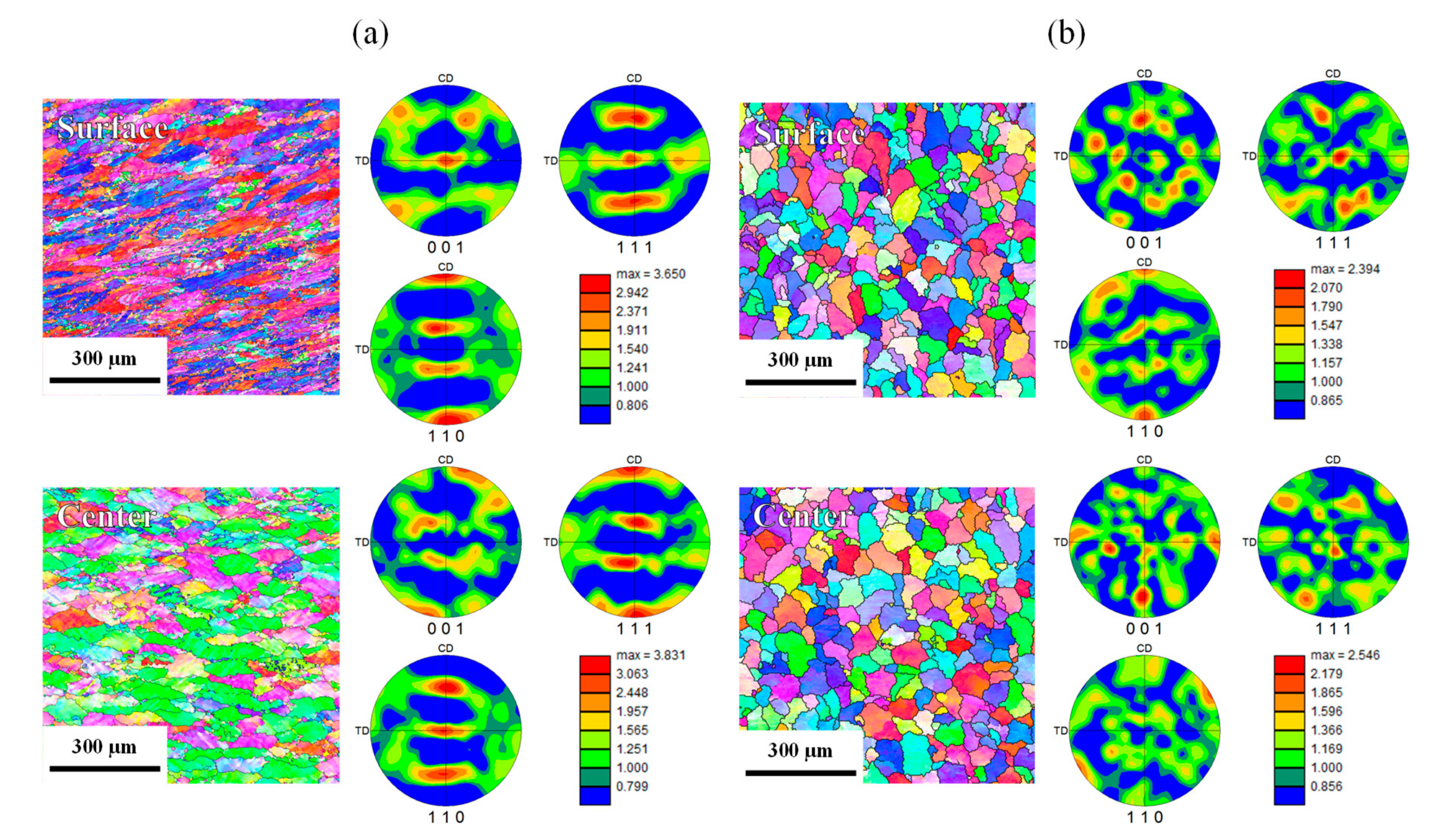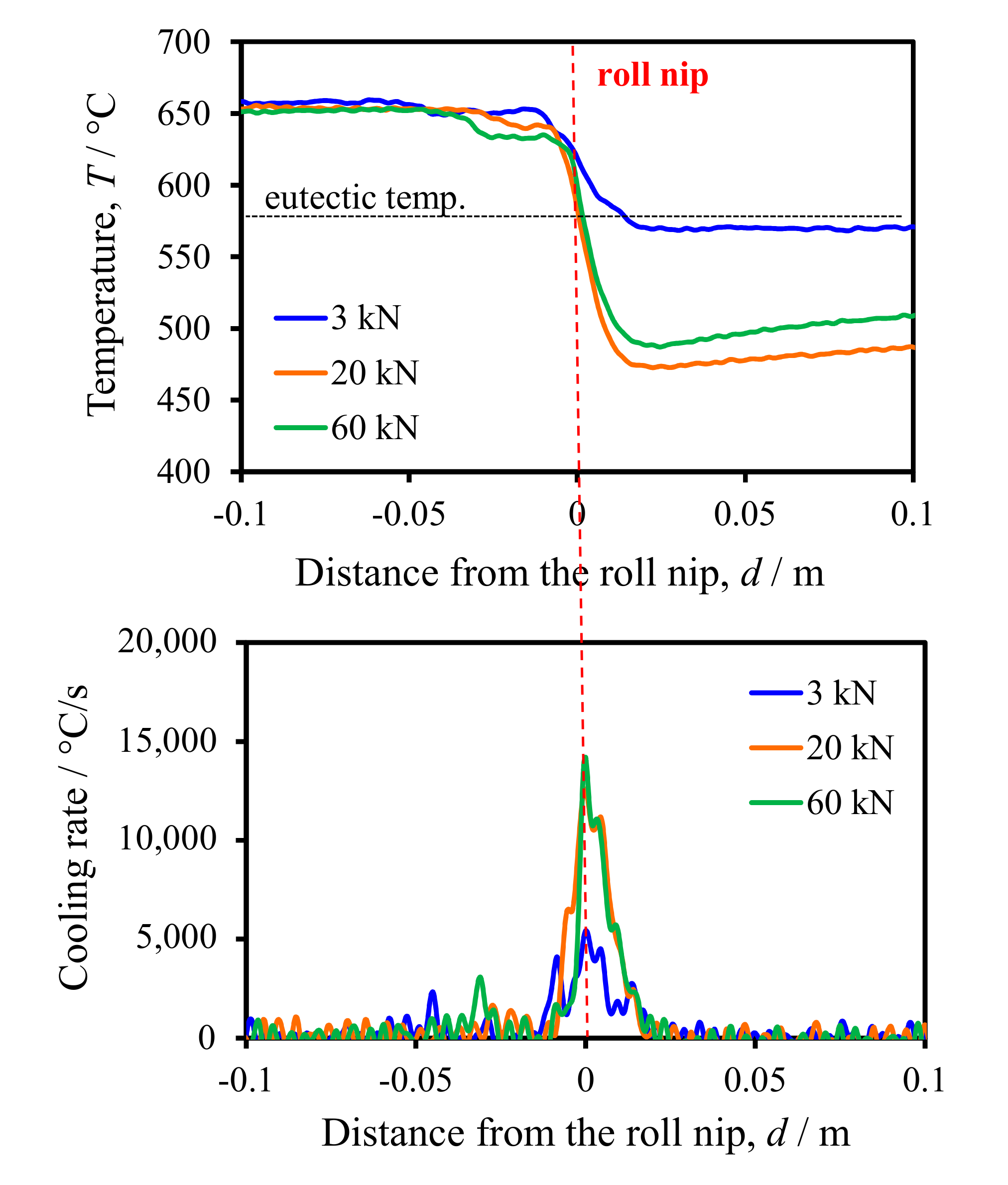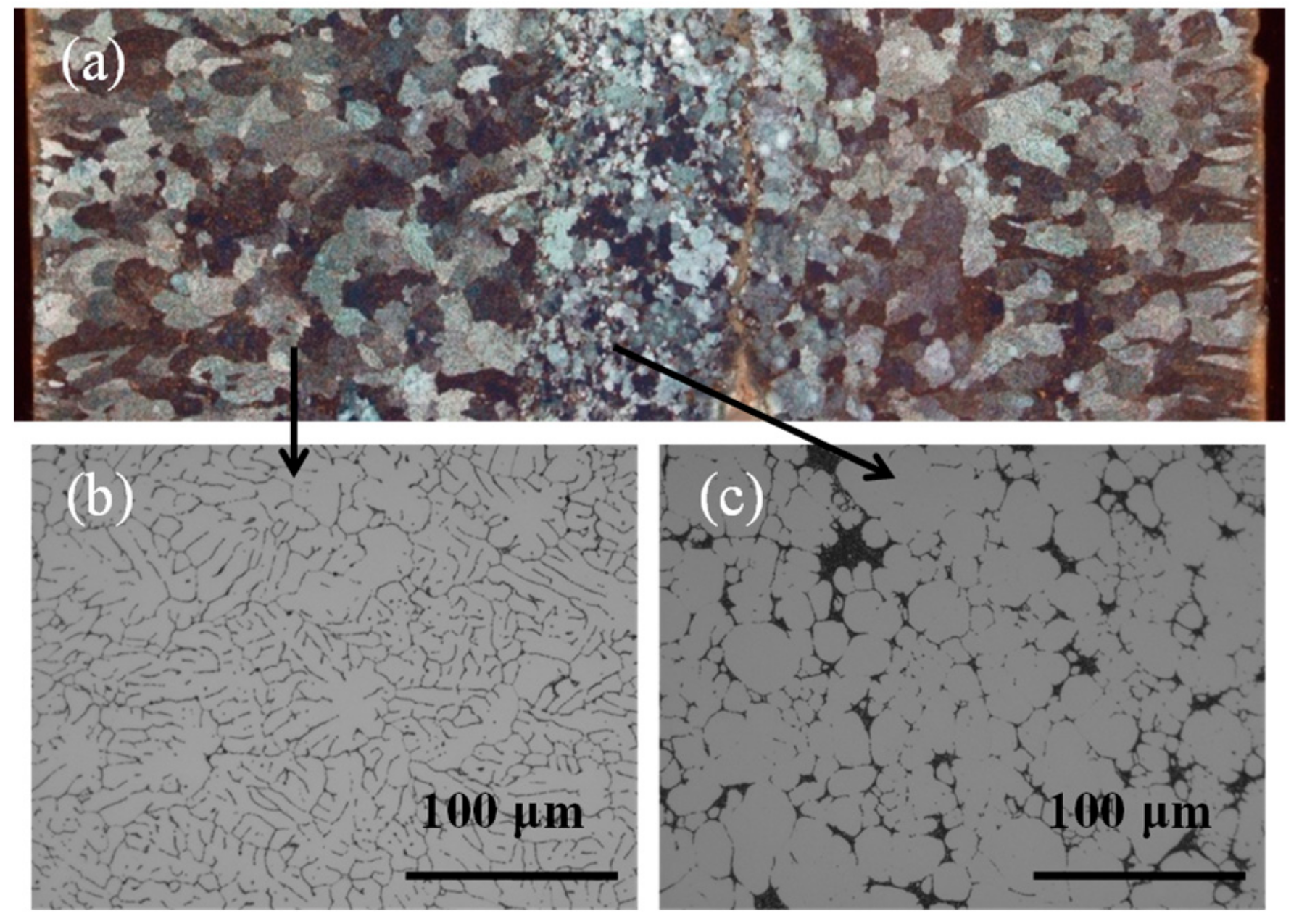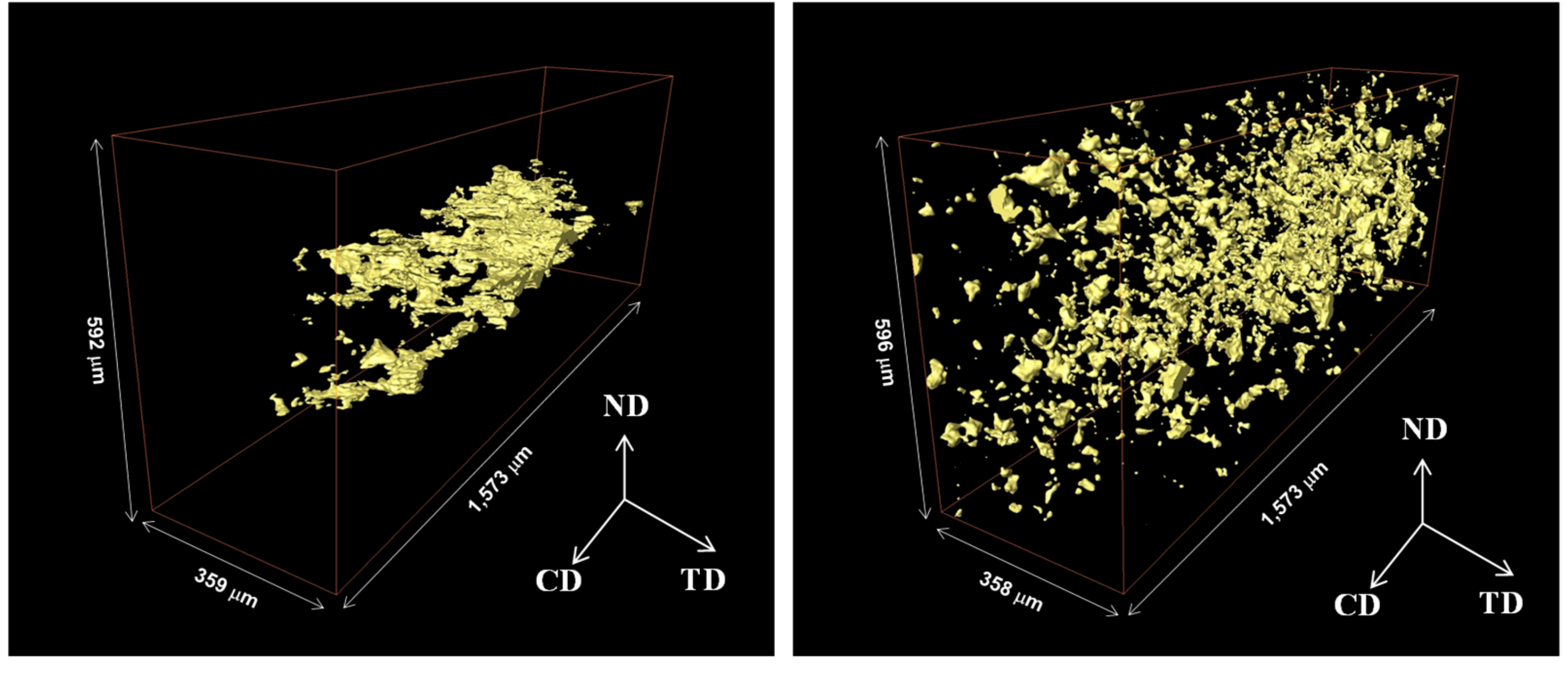Role of Roll Separating Force in High-Speed Twin-Roll Casting of Aluminum Alloys
Abstract
:1. Introduction
2. Materials and Methods
3. Results and Discussion
3.1. Increasing the Casting Speed in the Horizontal-Type TRC Process
3.2. Cooling Behavior of the Strip in HSTRC
3.3. Microstructure of the HSTRC Strip
3.4. Influence of the Center Segregation Type on the Mechanical Properties of the TRC Strips
4. Conclusions
Author Contributions
Funding
Conflicts of Interest
References
- Haga, T.; Takahashi, K.; Ikawa, M.; Watari, H. A vertical-type twin roll caster for aluminum alloy strips. J. Mater. Process. Technol. 2003, 140, 610–615. [Google Scholar] [CrossRef]
- Haga, T.; Takahashi, K.; Ikawa, M.; Watari, H. Twin-roll casting of aluminum alloy strips. J. Mater. Process. Tech. 2004, 153–154, 42–47. [Google Scholar] [CrossRef]
- Kim, M.S.; Kim, S.H.; Kim, H.W. Deformation-induced center segregation in twin-roll cast high-Mg Al-Mg strips. Scr. Mater. 2018, 152, 69–73. [Google Scholar] [CrossRef]
- Kim, M.S.; Kim, H.W.; Kumai, S. Direct temperature measurement of Al-2mss%Si alloy strips during high-speed twin-roll casting and its application in determining melt/roll heat transfer coefficient for simulation. Mater. Trans. 2017, 58, 967–970. [Google Scholar] [CrossRef]
- Kim, M.S.; Kumai, S. Effect of Si content on strip thickness and solidified structure in high-speed twin-roll cast Al-Si alloy strips. Mater. Trans. 2011, 52, 856–861. [Google Scholar] [CrossRef]
- Aguilera-Luna, I.; Castro-Román, M.J.; Escobedo-Bocardo, J.C.; García-Pastor, F.A.; Herrera-Trejo, M. Effect of cooling rate and Mg content on the Al-Si eutectic for Al-Si-Cu-Mg alloys. Mater. Charact. 2014, 95, 211–218. [Google Scholar] [CrossRef]
- Jiang, B.; Ji, Z.; Hu, M.; Xu, H.; Xu, S. A novel modifier on eutectic Si and mechanical properties of Al-Si alloy. Mater. Lett. 2019, 239, 13–16. [Google Scholar] [CrossRef]
- Suery, M.; Flemings, M.C. Effect of strain rate on deformation behavior of semi-solid dendritic alloys. Metall. Trans. A 1982, 13, 1810–1819. [Google Scholar]






© 2019 by the authors. Licensee MDPI, Basel, Switzerland. This article is an open access article distributed under the terms and conditions of the Creative Commons Attribution (CC BY) license (http://creativecommons.org/licenses/by/4.0/).
Share and Cite
Kim, M.-S.; Kim, H.-W.; Kim, S.-H.; Kumai, S. Role of Roll Separating Force in High-Speed Twin-Roll Casting of Aluminum Alloys. Metals 2019, 9, 645. https://doi.org/10.3390/met9060645
Kim M-S, Kim H-W, Kim S-H, Kumai S. Role of Roll Separating Force in High-Speed Twin-Roll Casting of Aluminum Alloys. Metals. 2019; 9(6):645. https://doi.org/10.3390/met9060645
Chicago/Turabian StyleKim, Min-Seok, Hyoung-Wook Kim, Su-Hyeon Kim, and Shinji Kumai. 2019. "Role of Roll Separating Force in High-Speed Twin-Roll Casting of Aluminum Alloys" Metals 9, no. 6: 645. https://doi.org/10.3390/met9060645
APA StyleKim, M.-S., Kim, H.-W., Kim, S.-H., & Kumai, S. (2019). Role of Roll Separating Force in High-Speed Twin-Roll Casting of Aluminum Alloys. Metals, 9(6), 645. https://doi.org/10.3390/met9060645



